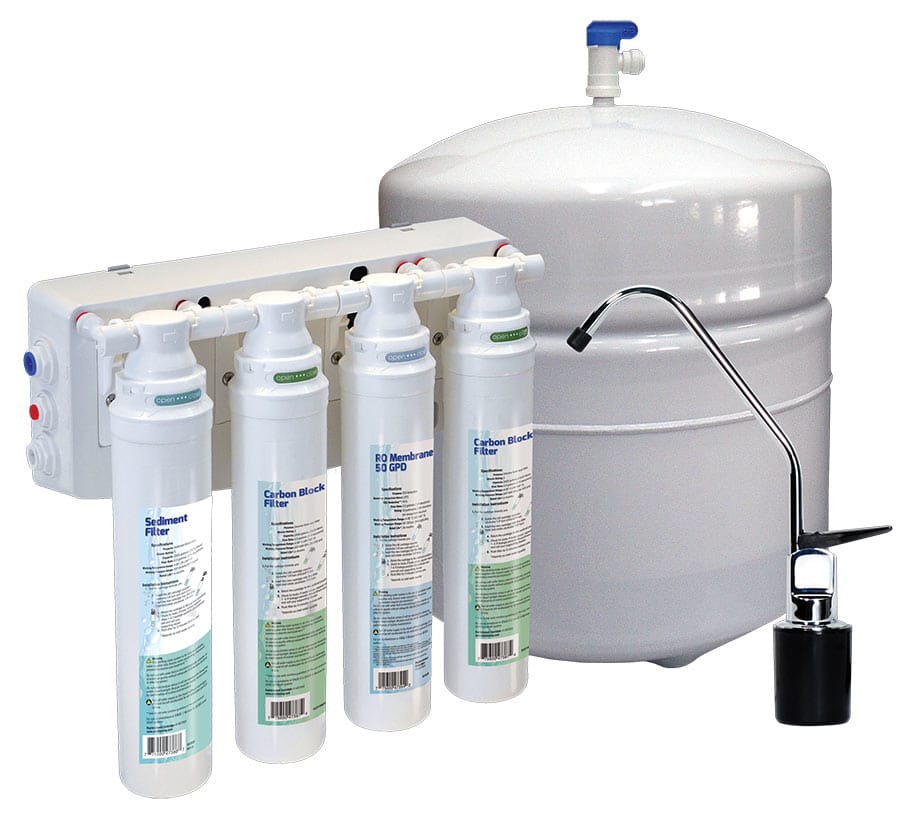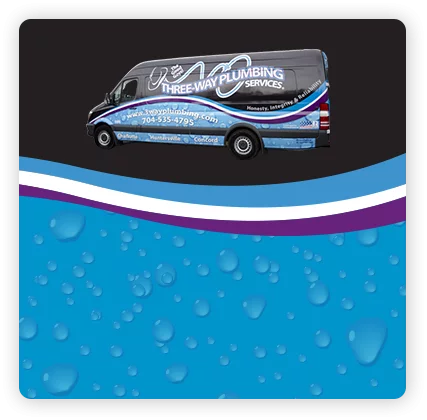

Reverse Osmosis vs Carbon Filter: The Best Option for Your Home

Looking for the right water filtration system can feel overwhelming. You’ve probably come across two popular options: reverse osmosis and carbon filtration.
In this guide, we’re stacking carbon water filters vs reverse osmosis to cut through the nonsense and get down to the truth. There’s a lot of misinformation and confusion out there about what these technologies do. We’re here to bring you the most accurate and up-to-date information.
What is Reverse Osmosis?
Using a WQA certified water filter is an effective & immediate way to reduce your families’ PFAS & PFOS exposure, but don’t settle for a system based on manufacturers claims alone! To ensure the reduction of forever chemicals, shop for a system certified to the following NSF/ANSI standards of 53, 58, 401 that specifically name the chemicals they are certified for the reduction they are claiming.
Reverse Osmosis (RO) is a comprehensive water treatment solution that delivers purified drinking water to your kitchen sink. RO systems force water containing dissolved solids through a semi-permeable membrane & the dissolved solids are retained on one side while allowing the highly filtered water to pass to the other side. Normally 85-99% of the dissolved solid contaminants are removed through this process.
You’ll find that RO systems actually include a carbon filter as part of their setup. Most RO units , especially thin film models, need to remove chlorine before water reaches the membrane. Without the initial carbon filtering step, the RO membrane would break down quickly. However, it only works on protecting the membrane because of the slow flow of water only being used at the kitchen sink for drinking & cooking and not for the whole house.
What is Carbon Water Filtration?
Carbon filtration isn’t just a modern innovation — it dates to ancient Egypt, where people discovered that storing water in charcoal kept it fresh and improved its taste. Today’s carbon filters are much more sophisticated, using specially processed coconut carbon that’s treated with steam at high temperatures.
These filters work through adsorption, which means they attract and hold contaminants like a magnet draws metal filings.
Chlorine is easily dissipated from sunlight, and many years ago municipal water supplies began adding ammonia to the chlorine to make it more stable and last longer saving them time and money from having to keep adding more chlorine.
However, once ammonia is added to chlorine it changes and becomes an even more toxic chemical known as chlorine. We need disinfections like chlorine and chloramine, but we also need to remove those disinfectants once the water safely arrives at our homes.
There are two types of carbon, GAC or granular activated carbon and carbon blocks. The best carbon to use is a catalytic carbon block because it not only removes chlorine but is the only carbon that also removes chloramine.
Carbon filtration works based on contact time for the adsorption process to be effective; therefore, the small carbon filters for the refrigerator or under the sink do a fairly good job at removing enough chlorine for that kitchen sink, but a minimum of 1 cubic foot of carbon is needed for the flow rate at the point of entry for a whole house system. With a whole-house carbon system you can enjoy clean, clear fresh water at every tap in your home.
Comparing a Reverse Osmosis Water Filter vs Carbon Filter
Contaminant Removal
95 million Americans are exposing themselves to cancer causing chemicals in their water. This is why it’s incredibly important to understand what types of filters remove what chemicals.
If you are dealing with any type of health concerns, only use an RO that is validated NSF/ANSI 58 for the contaminants in question.
The QCRO system by Novo Water and made by Canature Water Group we keep in stock is NSF/ANSI 58 certified for the reduction of the following substances: arsenic, barium cadmium, chromium (+6 and +3), copper, fluoride, lead, radium, selenium, rabidity, TDS, PFOA and PFOS (the forever chemicals).
The concentration of the indicated substances in water entering the system was reduced to a concentration less than or equal to the permissible limit for water leaving the system as specified in NSF/ANSI 58.
The carbon filtration uses an advanced filtration process to remove chlorine, chloramines, and volatile organic compounds (VOCs) that can affect both water quality and your home’s environment.
While disinfectants like chlorine and chloramines play a crucial role in keeping water safe during its journey to your home, their presence after reaching your taps offers no additional benefit. In fact, these chemicals can create unwanted byproducts and compromise your home’s water quality in several ways. Carbon filtration steps in to remove these unnecessary chemicals, eliminating the unpleasant taste and odor they can impart to your water.
Types and Effectiveness
Carbon filters come in different forms. You’ll find carbon block filters generally work better than granular activated carbon (GAC) filters. Carbon blocks keep the filtering material in place, while GAC can develop channels that let water bypass proper filtration — think of how water carved the Grand Canyon and compare it to that. Even better is catalytic carbon which is a carbon block that has been supercharged.
Micron ratings tell you how fine the filtration is. The smaller the number, the more the filter catches. Some carbon blocks are absolute 0.5 micron filters, which is as tight as you can practically make them while still allowing water flow.
Maintenance and Longevity
Here’s something interesting about carbon filter vs reverse osmosis systems: Some types of carbon filters may need regular replacement based on specific contaminants, not just chlorine levels. For example, some filters might handle 20,000 gallons of chlorine removal but lose effectiveness against trihalomethanes after just 750 gallons; therefore, it is critical to be sure you choose a whole-house system with a minimum of 1 cu foot of carbon. If it is equipped with a self-backwashing, it will remove the buildup from adsorption, flush it away and continue to work optimally. A 150-cuf whole-house catalytic carbon system with KDF by Novo that we carry will last the average family of four 7-10 years with no maintenance required; and once it is depleted, only the media needs replacing. The Novo QCRO-4v50 we carry has quick-change 1/4 turn cartridges to be replaced annually and are disposable.
Frequently Asked Questions
Is reverse osmosis water the healthiest?
RO systems remove a wider range of contaminants, including ones that carbon filters can’t touch. For complete treatment, combining RO with a high-quality catalytic carbon filter gives you the best of both worlds. Is your tap water safe to drink? Enter your zip code here to find out!
What is the main problem associated with reverse osmosis?
The main challenge with RO systems is they need pre-filtering through carbon to protect their membranes. Without this step, chlorine and VOCs can damage the system. That’s why quality RO units always include carbon filtration as part of their setup. An RO System is meant for purified drinking water and is placed under a kitchen sink or in a crawl space underneath and not meant for the whole house.
Can bacteria grow in RO water?
While RO systems themselves don’t specifically target bacteria, many modern carbon block filters used in RO systems can handle microbiological contaminants. Some carbon blocks, like those rated at absolute 0.5 micron, can stop organisms like cryptosporidium, which are too large to pass through such tiny pores.
Don’t RO Systems waste a lot of water?
Traditional RO Systems will use 5 gallons of contaminated water down the drain to 1 gallon of purified water. The Novo QCRO-4v50 that we carry only puts 2 gallons of contaminated water down the drain to 1 gallon of purified water stored for use which is a huge water saving feature. The water that goes down the drain is water that you do not want and is full of the contaminants removed.
Doesn’t an RO system remove all the minerals naturally found in water and gives it taste?
Yes, a traditional RO System does remove everything from the water. However, with the Novo QCRO-4v50 we carry, we install a pH Booster and remineralizer as the 4th cartridge. We do not get our daily supply of minerals from the water we drink but the food we eat instead. The remineralizer helps with taste. If you read the label of all the bottled water out there that says purified drinking water, it says RO water with the minerals added back in.
Final Thoughts on Reverse Osmosis Filters vs Carbon Filters
When choosing between a carbon water filter vs reverse osmosis system, consider what you want to remove from your water. Catalytic carbon filtration excels at removing organic compounds such as VOCs, chlorine and chloramine, while RO systems handle can handle the removal and reduction of chemicals and a broader range of contaminants to deliver healthy, purified drinking water at the kitchen sink.
The reality is, combining both carbon filtration and reverse osmosis is the best way to treat your water. This is why we offer premium whole house water treatment and filtration systems that filter out contaminants and purify your water to help keep you and your family safe.
Discover Our Water Filtration Services!
At Three Way Plumbing, we’re ready to help you choose and install the perfect water filtration system for your home. Our experts can evaluate your water quality and recommend the best solution to meet your needs.



why choose three way plumbing?
With over 25 years of experience as a trusted plumber in Charlotte, NC and surrounding areas, we have proven our ability to provide fast, high-quality plumbing repair, replacement, and Charlotte water filtration and installation service.
Our friendly team members are dedicated to getting to the root of your problem, not merely a quick fix. Expect upfront, transparent, and respectful services from start to finish.
Contact the Good Guys today at Three Way Plumbing for help regarding water filtration system installation.
- Regular Saturday Appointments
- 100% Guarantee
- 30 Minute Call-Ahead
- WAREHOUSE ON WHEELS
- Honest Pricing

